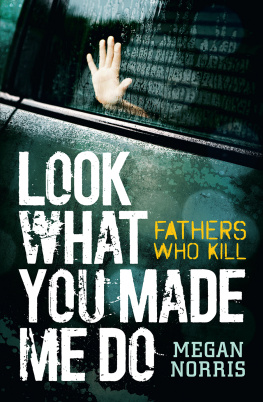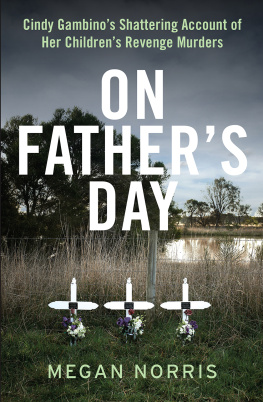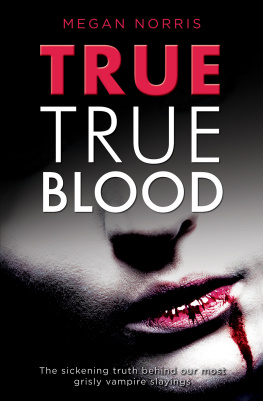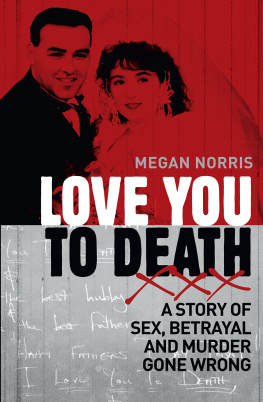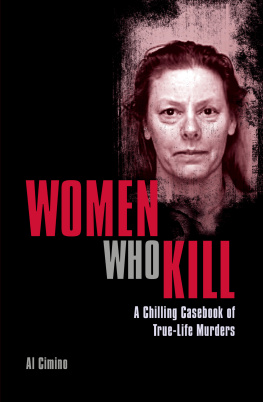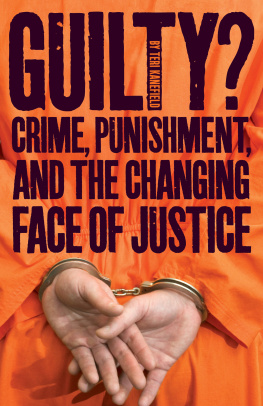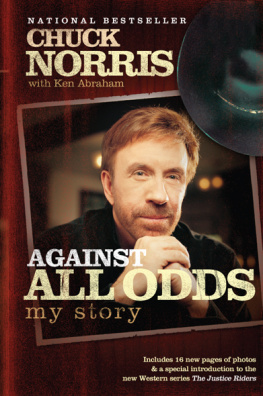In memory of Kelly East, Jessie and Patrick Dalton, Jai, Tyler and Bailey Farquharson, Jack, Maddie and Bon Bell, Yazmina Acar, Darcey Freeman, and Marilyn and Sebastian Kongsom. And all the other innocents who have been used as weapons to punish their mothers.
Contents
The story of Michelle Steck and Kelly East
The story of Dionne Fehring, Patrick and Jessie Dalton
The story of Cindy Gambino and Jai, Tyler and Bailey Farquharson
The story of Peta Barnes and Darcey Freeman
The story of Rachelle DArgent and Yazmina Micheline Acar
The story of Karen, Jack, Maddie and Bon Bell
The story of Ingrid Poulson and Marilyn and Sebastian Kongsom
Introduction
Paybk u slut
Prominent Melbourne criminologist Judy Wright once told me that when women were asked to nominate the worst possible thing a partner could do to them, their answers were always the same. Far more horrifying than having acid thrown in your face, or being set on fire to suffer a lifetime of disfigurement or a horrible death, women uniformly said that the most agonising punishment a spouse or former partner could possibly inflict on them would be to murder their children.
Nothing could ever top the crime of filicide (the murder of a child under the age of 18 by a parent), explained Judy; not when that crime was motivated by spite and an overriding desire to pay a woman back for ending a relationship. Surviving with the guilt, knowing that her children had been killed to punish her, was the worst kind of suffering any mother could imagine.
Tragically, studies in Australia reveal that 85 per cent of all child homicides are carried out by a parent. In 2014, a ground-breaking statistical overview of the tragic phenomena of filicide in the United States revealed that over the past three decades, American parents committed filicide approximately 500 times each year. Worryingly, supporting research from around the world shows the majority of those offenders are the victims biological fathers.
Determining motives for filicide is difficult and complex. However, in her 2012 discussion paper Just Say Goodbye, Dr Debbie Kirkwood, a renowned researcher in this area, says that records from the 2010 Annual Report from the National Homicide Prevention Monitoring Program revealed that 35 per cent of all child murders recorded in Australia between 1997 and 2008 had been triggered by the collapse of a relationship.
International filicide studies have identified different categories for child murder, not including the killing of newborn babies, known as neonaticide. Dr Kirkwood cites a 1969 study conducted by US psychiatrist Dr Phillip Resnick, who identified five different types of child murder:
Altruistic when a parent murders a child to protect it from real or imagined suffering.
Acutely psychotic the parent who kills under the influence of a severe mental illness or in the grip of a psychotic episode.
Unwanted child killings where the children are obstacles in a parents life.
Fatal abuse murder resulting from maltreatment or neglect.
Spousal revenge murder killing a child to punish its mother.
Dr Kirkwood says her own research for the Domestic Violence Resource Centre Victoria shows that younger children are more at risk of fatal abuse or accidental death, and that these types of killings are more likely to be perpetrated by mothers.
But she says retaliatory filicides, or spousal revenge murders, are different. Purposeful or intentional murders tend to be committed against older children and are crimes borne out of a specific intention to kill. They are crimes of revenge in which children are used by an aggrieved partner to punish a current or former spouse.
Dr Kirkwood points out that while there are documented cases where mothers have also murdered their children out of revenge, international studies into retaliatory filicides have consistently shown that most child revenge killings are perpetrated by men. In such killings there is likely to be a history of violence towards the intimate partner or other family members, while mothers who kill their own children have often been the victims of family violence.
In 2015 Professor Myrna Dawson, Chair of Public Policy and Criminal Justice at the University of Guelph in Canada and a member of the International Homicide Research Working Group, conducted one of the most extensive reviews of filicide ever undertaken. Studying Statistics Canada data covering more than 50 years of family homicides nationally, she discovered that between 1961 and 2011 at least 1612 Canadian children had been killed by a parent. Again, she found the majority of offenders were biological fathers, who were more likely than offending mothers to take their own lives after the crime.
What is telling, says Professor Dawson, is that statistics since 1991 showed there had been more reports of domestic violence leading up to these crimes, and that killer fathers were far more likely to be motivated by feelings of jealousy and a desire for revenge than mothers who killed their own offspring.
The fact that males are more likely to kill their children has also been supported by a groundbreaking UK study published in August 2013 in the Howard Journal of Criminal Justice by researchers from the University of Birmingham. After trawling through newspaper cuttings of cases of family homicides which occurred between 1980 and 2012, the research team identified four different types of killer whom they coined the family annihilator. Professor David Wilson, director of the universitys Centre of Applied Criminology and one of the studys three authors, explained that prior to this study, family annihilators had received little attention as a separate category of killer; previously these types of family killers had been viewed as spree killers or serial murderers offenders who had simply snapped and gone on to murder their families. But this was not necessarily the case.
The most common characteristic of familicides was that 60 per cent of all family annihilators were male and that the crime was on the rise. Over half of the family homicides the researchers examined had been committed in the first decade of the millennium. And most of the offenders were men in their thirties, while 10 per cent were younger and the oldest offender was 59.
In England, the trigger time for the family annihilator appeared to be the northern-hemisphere-summer school holiday period when fathers had more access to their children. The UK study also found that around half of all family murders take place at the weekend, particularly on a Sunday. Research conducted by the Australian institute of Criminology confirms that Sunday is the most dangerous day of the week for children, probably because this is when the majority of youngsters are returning from weekend access visits with their fathers. Most murders occur during the afternoon and early evening, and younger children, under the age of one, are at most risk of being killed.
Like the UK study, Australian studies have found that family annihilators commonly attempt suicide after killing their families. This quashes the long-held theory that such offenders were inclined to seek a stand-off with authorities, resulting in suicide by cop, which is commonly the case in spree killings.
But what was also obvious in the UK study was that fathers who killed their families were not necessarily unhappy or frustrated dads with failed lives. Research showed that some family annihilators had had successful careers before they murdered and over 70 per cent were gainfully employed in occupations ranging from postmen and truck drivers to surgeons and marketing moguls.

